Preparing Soil for a Vegetable Garden – Your Foundation
The soil is your foundation in a vegetable garden. It represents a huge factor in whether or not your garden will succeed or fail. The better you prepare and keep your soil, the better your vegetables will grow. The more time and effort you invest in planning and preparing soil for a vegetable garden the less time you will ultimately have to spend in maintaining weeds and other problems.
Soil is comprised of various forms of minerals and decaying organic matter. A healthy soil is fairly easy to spot. It is dark, and not so fine that you cannot hold it in your hand, but loose enough to crumble if you try to form a ball with it. Soils are typically one of three types…clay, sand, or loam. Clay has adequate nutrients but doesn’t have good drainage. Sand drains well, but lacks the nutrients. Loam is the ideal mix of both. The area you live in will to a great degree determine the type of soil you have, and most people will not have soil that would be considered ideal. The good news is that there are methods to improve any soil.
Before you prepare the soil:
- Find the right spot for your vegetable garden
One of the first things you should determine in your planning stage is how big the project you are starting on is going to be. It may be a small garden in your backyard or even on your apartment patio, but it could also be a plan for a large garden, covering many square feet, and several different crops.
You need to be conscious of what space you have, and where the space is. If you have a yard it may be large or small but odds are that some of it won’t be suitable for putting in a vegetable garden. So, it is important to assess the actual space you have that is conducive to being converted to a garden.
A small area does not mean that you cannot grow vegetables.
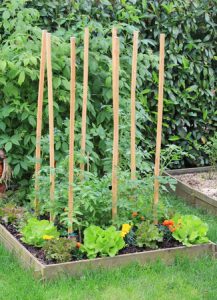
You do not need an entire open field. Using small spaces, creative spaces, and various forms of vertical growing methods can allow someone with very little space to grow vegetables.
Vegetables need ample sunlight to grow, at least 6-8 hours daily. It is preferable to have a spot on level ground, and have soil that drains well. If you do not know how much sunlight your area gets take an hourly reading on a sunny day. List by the hour, from sunrise to sunset, a description such as “full sun”, “partial sun”, “partial shade”, and “full shade”. This will tell you the exact level of sun you are getting throughout the day.
Another factor to consider is how you will water. You need an available water supply near enough to allow for irrigation.
- Prepare Your Garden Area
Once a site has been determined you will need to define your spot. This will depend in large part on how much space you have. You may have a long and relatively narrow section, say 24 feet by 6 feet. Or you may want one or more square boxes. Whatever you have, you need to mark out the boundaries of the proposed garden. You can use stakes and a string or a pliable garden hose.
After the space has been defined you need to clear your area of existing grass, weeds, and anything else that is in the way. If you are putting this garden into an existing lawn then the grass has to be dealt with. This may require you to dig the grass up by spading under the soil and cutting it into smaller pieces that can be removed. If you have ample time you might choose to use a plastic sheet staked down over the area to kill grass and other vegetation slowly. This method can take several weeks. If all you have are weeds, you can use a glyphosate herbicide to eliminate them.
When you have the space clear of any grass or weeds then it is time to till your soil. If you have a larger space to till it is probably worthwhile to invest in renting a rear tine rotary tiller. But these tillers can be bulky and hard to navigate in tight spaces. If you have a smaller space, a larger tiller may be too hard to maneuver for what benefit it offers you. In this case, a smaller cultivator may work just fine. You may need to till once, then rake the loosened soil to the side, then till again until you get to your desired depth. The advantage of a smaller tiller/cultivator is that it is much easier to handle within smaller, tighter spaces.
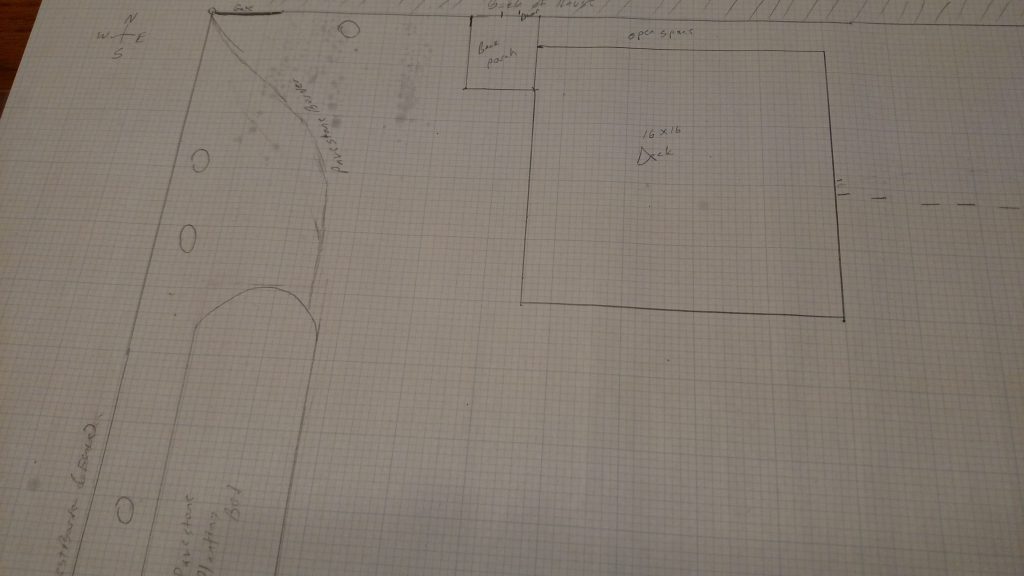
One useful measure is to put a plan on paper. Make a scale drawing of your proposed garden area and the area around it. This will enable you to make your plans before you begin.
- Test Your Soil Drainage
Adequate drainage is extremely important in a vegetable garden. You need soil that will retain moisture but not become too soggy. A soil that has no moisture will cause plants to dry out and die. On the other hand, a soil that doesn’t drain will cause roots to rot.
It is a good idea to test your soil for drainage before you plan or plant anything. One way to do this is to dig a hole about a foot deep, fill it with water, and allow it to drain away. Then fill it again and see if it will again drain away. If it does within 24 hours then the drainage is most likely adequate for what you want to plant. However, when a few inches of water fails to drain after a day, then plants which need excellent drainage will likely need to have organic matter worked into the soil before planting. When several inches of water remain, you are probably going to have difficulty planting. One solution to this issue is to plant in a raised bed.
Preparing the soil:
- When Should the Soil Be Prepared
Assuming you are making a garden for yourself and your family, and not to grow vegetables commercially, then a key decision you need to make is simply to ask yourself what you like, what vegetables would suit you and your family. Figure out what your favorite vegetables are, and then plant them according to the proper time. Different vegetables need to be planted at different times of the year, and have different harvest times. Have a plan for what you will grow and when you will grow it.
Plant your vegetables by growing season. Most areas have a fall and spring planting season. When seasonal crops are harvested there is a dormant period where you can work your soil and prepare it all over again. The soil is turned, debris cleared, and fertilizers added. Mulching can and should be done in both the spring and the fall. In the spring it helps get your garden through the growing season. In the fall it provides protection from colder temperatures. Apply a 2-4 in layer both seasons.
Knowing how to maximize the soil you have to work with in your vegetable garden is worth the time and effort that is required.
- The Soil Test
Soil should be tested before anything is planted. If you are planning to plant in different areas of your landscape you may want to have multiple tests done, because soil can vary within the same landscape. All soils are different and you need to know what it is composed of in order to make the best preparation decisions.
A soil test will give you information on the pH and nutrient levels that your soil actually has. pH is a measure of how acidic or alkaline the soil is. It is measured on a scale of 1-14 where 1 is the most acidic, 14 is the most alkaline, and 7 is neutral. pH can be modified by adding amendments to the existing soil. The goal for most growth is to have a pH of about 5.5 to 7, which is slightly acidic.
You can use a home test kit to perform a soil test, but for about the same cost you can have your soil professionally analyzed. A county extension office is your source for information on how to get this done in your area. Private labs can also do this, but they may be more expensive and are generally not necessary. Once you have the sample kit, just follow the instructions that come with the kit for information on how to submit. You will need to dig a few small holes and collect samples from the specific area you want tested. You may wish to have multiple tests done for different areas of your landscape.
- Organic Matter
Organic matter will need to be needed to be added to any vegetable garden. It aids your soil in a variety of ways. Drainage, loosening compacted soil for air flow, and giving balance to loose soil to help retain moisture are just a few of the benefits of organic matter, but it is essential for your vegetable garden.
Based on the results of your soil test you may need to make the soil more acidic, or possibly more alkaline. Both of these goals can be accomplished with organic matter. Organic matter comes in forms such as compost, well-rotted manure, sphagnum peat moss, and pine bark mulch. These components are added and then worked into the soil with a tiller or cultivator, mixing them thoroughly in until there is a consistency throughout the garden about 6-12 inches deep.
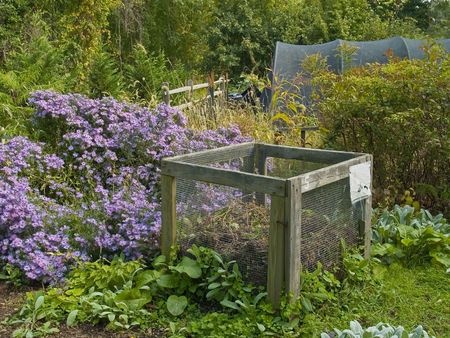
Organic matter is the best thing you can add to your soil. Clay based soils are dense and do not drain well. On the other hand, sandy soil is loose and cannot retain moisture or nutrients. Adding organic matter helps to loosen the dense clay as the matter begins to decay, and it adds bulk to sand to allow for better moisture retention.
If you have a heavy clay soil you should also add an inch of expanded shale to the organic matter. Expanded shale is a relatively new product that has been shown to be highly effective in loosening tight clay soils. It should be part of any planting mix where clay soils are involved.
When you have worked organic matter into the soil and planted your crop the next step is to mulch. Mulches, in the form of bark, compost, or straw should be spread over the soil surface in a 2-3 inch layer. It will help with weed prevention and moisture retention, as well as provide insulation to plant roots in cold weather and a block from searing direct sunlight in the summer. Mulching should be done in both the spring and fall. In the spring it helps get your garden through the growing season. In the fall, it provides protection from winter cold.
- Equipment
Equipment that will be needed to work a vegetable garden will vary according to the garden size, budget, and physical limitations of the gardener.
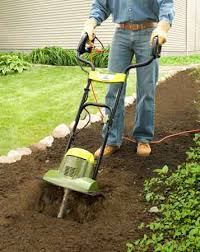
You will need something to work your soil. What you must take into consideration is the space you are going to be working. If you have a decent size area a rear tine rotary tiller is probably your best choice. These are heavier and more powerful, and will allow you to work your soil in a quicker amount of time. If you have a smaller area, a tiller/cultivator will get the job done. These will not dig as deeply into the soil, so you may need to go over the bed once, then rake the loosened soil aside and make a second pass to get to your desired depth.
If your soil is rocky, or you simply cannot till it to the necessary depth, an option that is often used is preparing a raised bed
- Consider Raised Beds
A raised bed is built on top of the existing surface, usually about 8-15 inches above the grade. The space is filled completely with organic matter. This allows you to garden in an area where your soil is shallow, or where your soil does not drain well.
- Container Soil Preparation
Vegetables can be grown in containers, but the soil preparation is different from a normal vegetable garden. First of all, there is no topsoil. Because of this, there are also none of the nutrients that the topsoil provides. This makes it necessary to fertilize a container bed fairly frequently, about once every two weeks, generally with a liquid fertilizer that is applied when you are watering the bed.
The planting mix for a container is mainly comprised of peat moss, perlite, vermiculite, and sand.
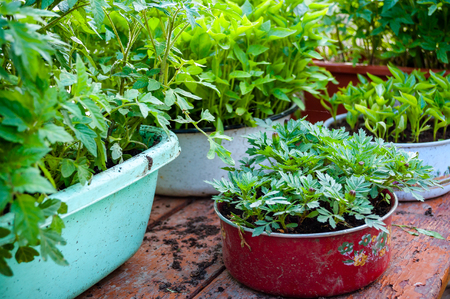
The easiest way to do this is to buy your container mix at a garden center or from an online retailer. This can go right from the bag into your container. Some mixes already contain compost, and if so it reduces your need to fertilize as much.
Afterward:
One large difference between a vegetable garden and perennials or shrubs is that you have the opportunity to re work your soil at various times. With perennials and shrubs you really cannot do this. With a vegetable garden you are able to have your soil tested as often as you need, and based on the results continually be amending the soil to fit your needs. A basic soil test should be done every couple of years.
Use time between your harvests and plantings to test and amend the soil. The regular adding of amendments is a way to keep the soil in good condition. The additions increase the nutrient value, adjust your pH to a more desirable level, and also help firm up sandy soil or loosen dense clay. Since your soil is the cornerstone of your garden, it must be attended to if you expect to grow successfully. A well maintained garden will always have well maintained soil